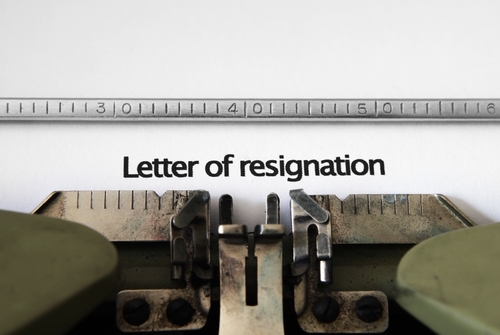We have all heard the horror stories of a resignation gone terribly wrong. The boss who flies off the handle, the co-worker that spews verbal abuse and even the beloved janitor who sobs inconsolably at the company’s significant loss. To be quite frank, leaving a job has the potential to be an emotional disaster for everyone involved.
Quitting your job doesn’t have to be a difficult, drama-induced affair. There are ways to calmly, politely and effectively tender your resignation so that no feelings are hurt and no bridges are burned.
To make your resignation seem like a walk in the park, just follow our step-by-step guide to quitting your job with ease.
Step 1. Book in a meeting face-to-face
As much as it would be easier, and far less confrontational, to draft a message on Facebook, tweet an announcement, email or text your boss that ‘you’re just not that into the job’ anymore, it’s probably not the wisest move.
While booking a face-to-face meeting is considered old school in some circles, it’s still the best port of call for this situation.
To begin with, you should choose the timing of your resignation carefully. Consider things like whether you have any outstanding commission or bonuses owed to you as well as vacation leave and other benefits.
Also think about whether the company’s policy is to walk you out of the building immediately following resignation, or if you will serve a notice period. Considering these things beforehand will remove a lot of stress from the process.
Then, ask your boss, in private, for a meeting when they are next available. Try to book it in at least a few days in advance, even if they insist that they’re ‘free now’. This will give you more time to prepare.
Step 2. The meeting: be calm, honest and straightforward
If you’re handing in your resignation, the chances are pretty high that there are at least some elements of the job or workplace you don’t like. But now is not the time to voice these issues. You have already made the decision to leave so any issues you raise will likely be dismissed and unless you think it would benefit your predecessor, not worth your while.
Instead, focus on offering tangible (but still honest) reasons for your resignation. It could be because you were offered a role that paid more, was closer to home and offers greater career advancement.
Be honest, open and relaxed. Even if you’re feeling nervous, try not to show it. Project that you’re calm and collected and sure of your decision. If your boss becomes emotional, don’t react. Your goal is to get out of this meeting emotionally (and physically!) unscathed. Possibly even with a glowing reference letter too.
So, don’t rise to the bait of complaining about your job. Your boss may try to win you over by promising the world, but stick to your guns. Counter-offers are a normal part of the resignation process and one you should be prepared for. If you absolutely want to leave, then don’t accept the counter-offer. Easy.
Counter-offers are often a spontaneous reaction from the employer in order to solve an immediate problem for the business: I. e a vacancy! Statistically, 90% of all employees who accept a counter offer still leave within 12 months. This is because the fundamental motivators of why you resigned are rarely addressed. Instead, you’re offered extra cash or a promotion, which can be often viewed as too little too late. After all, why weren’t you offered these benefits before?
Fore more information on counter-offers, read our next article ”Why Counter Offers don’t work”
Step 3. The meeting: bring the essentials
Unfortunately, it’s quite common for a small percentage of employees to threaten resignation when they don’t get their own way. For you, this usually means that your boss will bring a ‘what can I do’ attitude to the meeting, even if there is nothing they can do to make you stay.
To show you’re serious, make sure you bring a written resignation letter with you. The letter should state the facts, including the date you are submitting your resignation, a brief explanation of why you’re leaving and a short thank you for the opportunity to work with them.
Ensure too that you include when your last day at the company will be. Oh, and if you want to avoid igniting those flammable bridges we were talking about, ensure your notice period is reasonable. Even if your contract stipulates a week, offer at least two weeks and preferably a month.
Step 4. Get your affairs in order
Woo-hoo! The meeting is over, the resignation was begrudgingly accepted with few tears and tantrums and you’re now free. So, what should you do? Spend the next month torturing your co-workers? Reconvene at the pub? Google cat videos on YouTube?
If you want to keep that stellar business reputation you’ve accumulated, you’ll do none of the above. Instead, act as though nothing has happened. Perform all your normal duties to the best of your ability, offer advice and guidance to your co-workers and do not, I repeat do not, check out.
Leaving a tangled web of to-do’s, should-have-done’s, and oops-forgot-about-that’s is the quickest way to destroy your positive reputation. Leave your desk clean, your duties completed and provide a clean slate for the person who takes over your role.
If you’ve been asked to train somebody, do so to the best of your abilities. Tell them the secret ins and outs that helped you over the past months and years and ensure they have all of the passwords and information they need.
And once all that is done?
Then you can go to the pub. But now you’ll have a reference letter in hand and a bunch of your sad, but not spitting mad, co-workers with you.
See – tendering your resignation doesn’t have to be tumultuous. Just follow these steps, act responsibly and you will ace the resignation process.
For more information on the resignation process contact your TalentSphere consultant.




